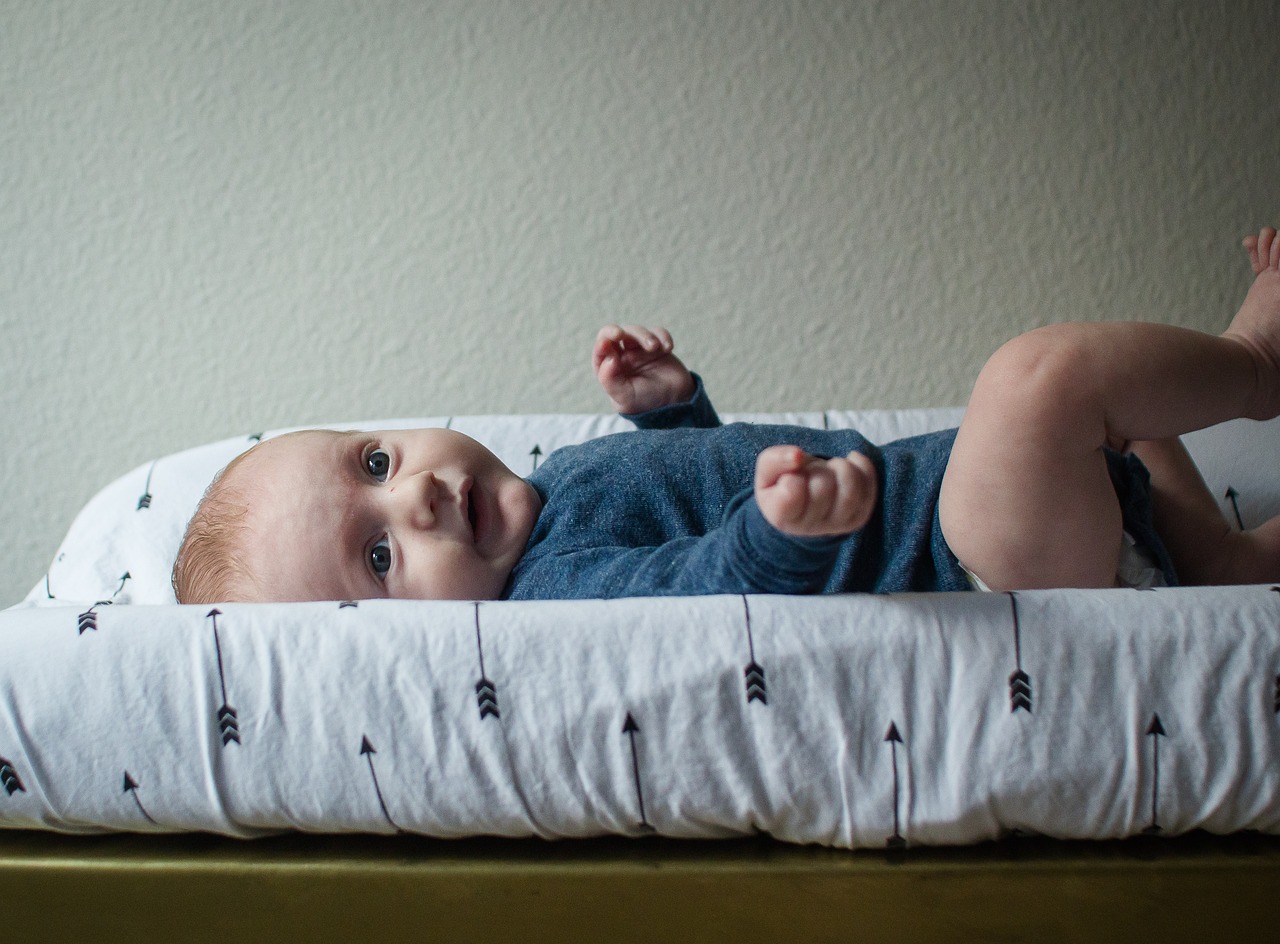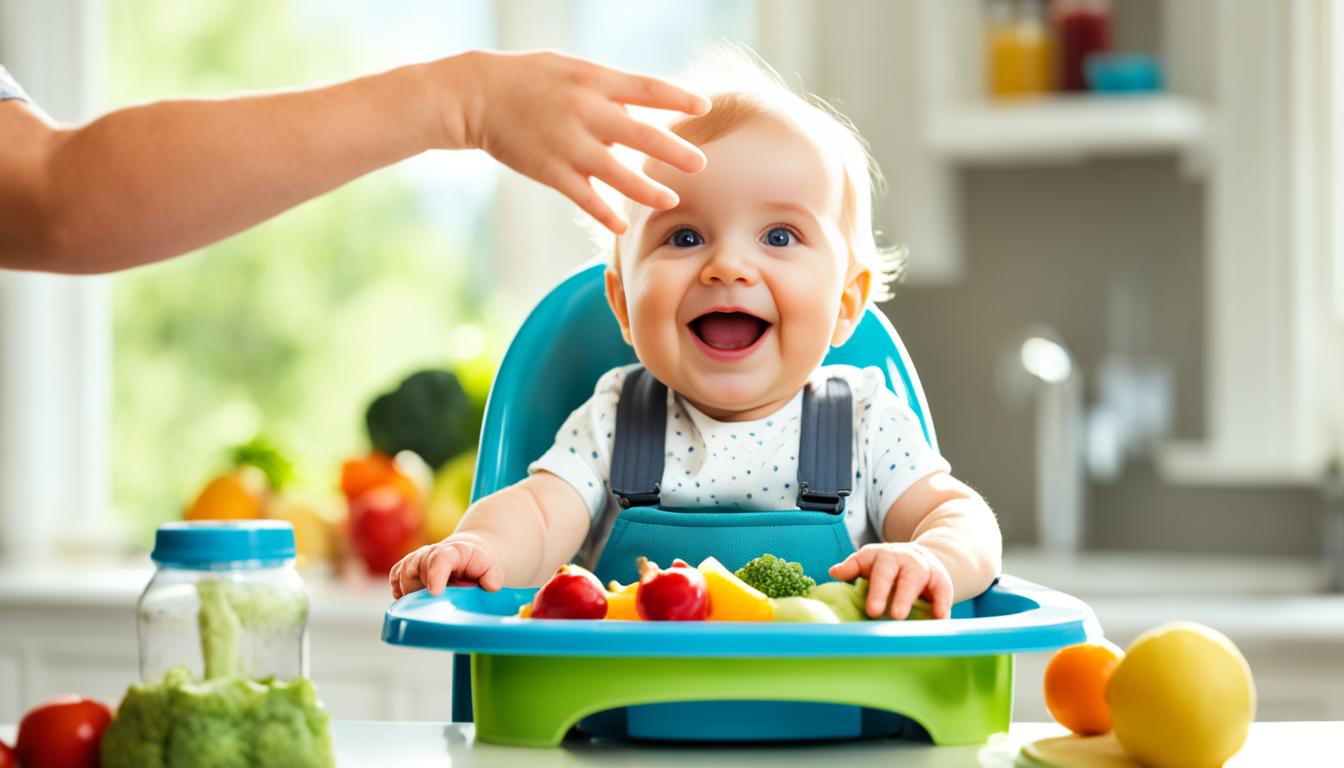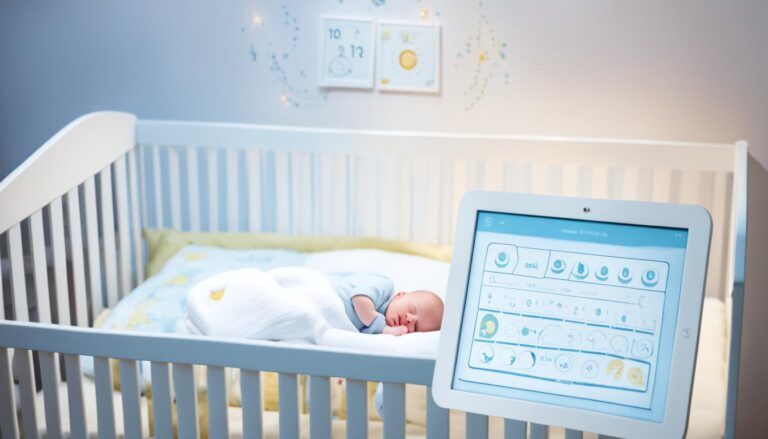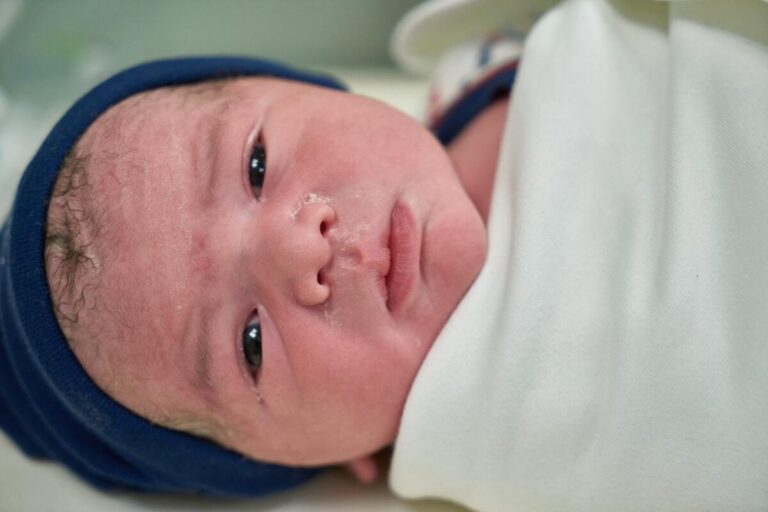Why Do Babies Cry When Changing Diapers – Diaper Change Tips
Every parent, new or seasoned, has faced the enigma at one point or another: Why do babies cry when changing diapers? It’s a universal experience, punctuating peaceful moments with perplexing tears. This routine care task can swiftly transition into a symphony of wails, leaving parents scrambling for a cause or, better yet, a solution.
Understanding the Need for Diaper Changes
When it comes to tending to a baby’s basic needs, few tasks are as indispensable as the consistent replacement of a baby’s diaper. With their skin as tender as a morning blossom, babies, particularly newborns, may experience discomfort and skin irritation from a wet or dirty diaper. This discomfort may quickly escalate into a distress signal – a powerful baby cry that can unsettle even the most composed parents. Consequently, it’s a good practice to make timely diaper changes a linchpin in your childcare routine.
Recognizing the opportune moment for a nappy change might seem as elusive as catching a butterfly, but there are cues and signs you can look out for. It isn’t always about waiting for an unmistakable aroma or an arbitrary amount of time to lapse. Rather, it involves becoming attuned to your baby’s unique rhythm and the condition of their diaper. For instance, if the diaper is heavily soiled or saturated, it’s a clear indicator that a diaper change is needed, preferably immediately.
Carrying out a diaper change is akin to conducting a well-rehearsed ballet. It involves an intricate dance of steps starting with disrobing the baby, discarding the soiled diaper, and cleaning the diaper area meticulously with baby wipes to prevent skin irritation. Following this, applying diaper cream may provide a protective layer on the baby’s sensitive skin, guarding against the harshness of urine and fecal matter. The finale involves swaddling the baby’s lower body in a fresh, clean diaper and redressing them in comfortable baby clothes.
Mastering this routine, coupled with maintaining a well-appointed diaper bag (complete with an assortment of clean diapers from trusted diaper brands, baby wipes, and diaper cream), can transform the daunting task of a diaper change into a seamless, stress-free experience. It also limits the time the baby spends on the changing table, reducing their exposure to cold temperatures and bright lights – a definite win given that temperature changes are one of the most common reasons babies detest diaper changes.
Keeping these factors in mind, it’s always a good idea to have a changing pad at hand. Having one offers a soft, comfortable surface for the baby during the change, as opposed to a hard surface that could cause discomfort. The right place for a diaper change can be just as crucial as the act itself.
In essence, comprehending the need for diaper changes and implementing a sound approach towards it will make this unavoidable task less daunting for new parents, and more comfortable for the baby.
Reasons Babies Might Cry During Diaper Changes
Frequently, a baby’s protest during diaper changes is an expression of discomfort or distress. Understanding these potential triggers can equip you to address them effectively. Here are the most common reasons:
- Sudden Temperature Changes: The transition from warm clothes to cold air can upset babies. Keep the room warm to minimize this shock.
- Hunger or Fatigue: A baby might cry if they’re hungry or tired. Try to schedule diaper changes around sleep and feeding times.
- Feeling Restricted: Babies love exploring their surroundings. Lying still might make them feel confined. Quick, efficient changes can reduce this discomfort.
- Unfamiliar Sensations: The feel of a wet wipe or a new diaper might confuse a baby. Using warm wipes and soft diapers can mitigate this confusion.
- Medical Issues: Skin conditions like diaper rash or medical conditions like spina bifida can cause pain during diaper changes. Consult a pediatrician for advice.
Recognizing these triggers can help you anticipate your baby’s needs, making diaper changes a smoother, more peaceful process.
Potential Causes for a Baby’s Discomfort During Diaper Changes
At the heart of parenthood is a fundamental question that often baffles even the most diligent of parents: why does my baby cry during diaper changes? This enigma, as universal as it is perplexing, can be decoded by understanding the common triggers that might cause your little one to shed tears during this necessary routine.
Babies, with their complex array of senses, perceive the world differently from adults. Their comfort zone is often disrupted during diaper changes, which could lead to a baby’s display of discomfort or even distress. One of the most common reasons babies protest diaper changes is the abrupt change in temperature. When their warm skin contacts the cold wipes, or they are exposed to room temperature air after being snugly wrapped, they react naturally to the sudden temperature change – they cry.
While we might view a dirty diaper as a simple inconvenience to be quickly dealt with, for babies, it’s an unexpected interruption of their ongoing sensory experiences. The bright lights in most changing areas can be overwhelming, and the unfamiliar smells of the changing mat and wipes may add to their distress. The entire time, they are held down in one place, which could make the baby feel restricted.
This leads to another core issue: some babies simply abhor the sensation of being confined. For little explorers eager to discover new things, being constrained on a changing table or pad might seem like an unnecessary pause in their adventure, leading to cries of protest.
Additionally, uncertainty or confusion about what’s happening can also cause a baby to cry. Babies are constantly learning and adapting to their environment. They might not understand the reason for being undressed and wiped, causing them to feel vulnerable and uncomfortable.
Medical issues can also be a catalyst for tears. Conditions such as acid reflux can make lying flat on their back a painful experience for the baby, amplifying their distress during a diaper change. If you notice your baby crying excessively during diaper changes and are unable to soothe them, it could be a good idea to consult your pediatrician to rule out any potential medical issues.
Making Diaper Changes More Comfortable
In the journey of parenthood, transforming a potentially stressful task like a diaper change into a comforting ritual is an art that can be mastered over time. With a blend of understanding, creativity, and empathy, you can enhance your baby’s comfort during this routine, decreasing the chances of a crying baby and promoting a more positive experience for both of you.
The best time to initiate a diaper change has often been the subject of debate among parents and child-care experts. Is it before feeding or after? When contemplating this question, bear in mind that babies with full tummies can be susceptible to acid reflux, especially when laid flat for a diaper change. As such, it may be a good idea to change the diaper before feeding. However, each baby is unique, and observing their reactions to different sequences can help you establish the best way tailored to their comfort.
Keeping a baby warm and cozy can be a game-changer during diaper changes. The main reason why some babies detest diaper changes is the sudden temperature change when their warm body is exposed to the cooler room temperature. Warming the room slightly before a diaper change or using a soft, warm blanket on the changing table can mitigate this.
Enhancing communication can significantly reduce a baby’s discomfort and uncertainty during the process. Speaking in a calm tone, maintaining eye contact, and using reassuring facial expressions can have a calming effect. Narrating the process, even with a newborn baby, can contribute to language development and familiarize them with the routine.
Making the change fun or distracting can also aid in decreasing discomfort. Singing nursery rhymes, making funny faces, or playing peekaboo can divert the baby’s attention from the unpleasant sensations. Handing them an unusual item, perhaps a shiny spoon or a plush toy that they usually don’t get to play with, can also help keep them distracted.
Another strategy is to praise your baby for their cooperation during the change. Even though they may not fully understand the concept of praise at an early age, the positive tone and enthusiastic facial expressions can make them feel secure and loved.
Lastly, adopting a well-prepared approach to diaper changes can make them faster and smoother. Keep all the necessary items – clean diapers, baby wipes, and diaper cream – within arm’s reach. Being prepared minimizes the amount of time your baby spends on the changing pad, thereby reducing their discomfort.
Comforting Tools and Techniques
In the realm of parenting, the right tools coupled with soothing techniques can transform challenging routines into harmonious interactions. This is especially true for diaper changes. Here’s a compilation of some comforting devices and methodologies that can transform these instances into serene moments of connection between you and your baby.
Leverage the Soothing Power of Baby Wipes
Baby wipes are more than just tools for cleaning; they carry a significant soothing potential. Choosing wipes designed for sensitive skin can help avoid skin irritation that can cause discomfort during diaper changes. A gentle, hypoallergenic wipe can clean effectively while caring for your baby’s delicate skin. Some brands even offer wipes with calming scents like lavender, which can have a relaxing effect.
Embrace the Warmth of Wipe Warmers
The shock of a cold wipe can be an unwelcome surprise for babies, often leading to fussiness. Here, wipe warmers come to the rescue. These ingenious devices gently warm the wipes to a comfortable temperature, thereby alleviating the cold surprise. Just remember to check the temperature of the wipes before using them to ensure they’re not too hot.
Ensure Your Baby is Comfortably Warm
Keeping your baby warm during diaper changes can make a world of difference. Whether it’s a warm room, a soft blanket on the changing table, or quick changes to minimize their exposure to the cold, your efforts to maintain their body temperature can significantly reduce their distress.
Sing a Song or Play a Distracting Game
Language development and distraction can work hand in hand during diaper changes. By singing nursery rhymes or talking to your baby throughout the process, you can keep their attention focused away from the change itself. Moreover, this interaction can contribute to their linguistic development and strengthen your bond.
Introduce a Distraction Toy
A special toy, introduced only during diaper changes, can serve as a great distraction. Opt for colorful, tactile toys that can keep your baby engaged. Changing this toy periodically can help maintain your baby’s interest, making diaper changes a more enjoyable experience.
Calm Your Baby with Gentle Touch
Never underestimate the power of a gentle touch. Massaging your baby’s tummy or softly stroking their arms and legs during a diaper change can have a calming effect. This not only soothes your baby but also provides a loving connection, transforming diaper changing time into a tender bonding moment.
In essence, the right tools and calming techniques can turn diaper changes from a dreaded chore into an opportunity for joy and connection. Remember, each baby is unique, so it’s all about discovering what works best for you and your little one, making every diaper change a more comfortable, enjoyable, and rewarding experience.
Understanding Baby Stages and Their Impact on Diaper Changes
Understanding your baby’s developmental stages can offer insightful clues into their behavior during diaper changes. As babies grow, their awareness and reactions evolve. Let’s delve into how this impacts the diaper-changing process across three primary stages.
- Newborn Stage – In their initial weeks, newborn babies are still acclimatizing to the world outside the womb. Sensory experiences like cold wipes or bright lights can startle them during diaper changes. Keeping the environment warm and softly lit can aid in comforting them. Additionally, maintaining physical contact, such as a hand on the tummy, can provide reassurance.
- 3-8 Months Stage – As babies develop, they become increasingly active and curious, making them less willing to stay still for diaper changes. This is also the time when they develop the ability to grasp objects. Providing a toy or a safe household item can keep them occupied, making diaper changes smoother.
- Toddler Stage – Toddlers begin to assert their independence, which can sometimes translate into resistance during diaper changes. At this stage, engaging them in the process, like handing you the wipes or diaper cream, can make them feel involved and more cooperative.
Recognizing these developmental milestones and adjusting your approach accordingly can transform the diaper change process into a more harmonious and efficient experience for both of you. Remember, patience and adaptability are key as your little one navigates these various stages of growth.
Will My Baby Ever Stop Crying During Diaper Changes?
The conundrum of a baby’s tearful protests during diaper changes may seem like an unending saga for new parents, but rest assured, this phase is indeed temporary. The cries during diaper changes are typically a phase in your baby’s development, a small bump in their burgeoning understanding of their world.
As your baby grows and develops, they will become more accustomed to the diaper change process. Their expanding awareness, coupled with the comforting techniques and tools you’ve incorporated into your routine, will gradually ease their anxiety. With patience, love, and a bit of distraction – maybe a beloved toy or the soothing rhythm of your voice – the tearful interludes will begin to diminish.
In the interim, it’s essential to remember that your baby’s cries are their primary means of communication. While the sound of a crying baby can be stressful, responding with patience and empathy can cultivate a sense of safety and trust, encouraging your baby to adapt to the diaper change routine with less distress over time.
Conclusion
The journey of understanding why babies cry during diaper changes and finding ways to soothe them can be challenging. But remember, every baby is unique, and what works for one might not work for another. Pay attention to your baby’s needs, use distraction techniques, and maintain a soothing environment to make the diaper change process less daunting. It’s all a learning process that, in time, will become a natural part of your childcare routine.










